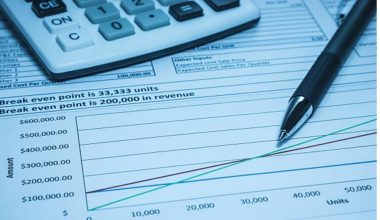The lack of money they say is the root of all evil. Everybody wants to be financially stable but most of us are finding it difficult. So here, lies every important detail you need to know about financial stability.
Definition of Financial Stability
Financial Stability is the ability to assess, distribute resources, and also monetary risks, preserve employment with relation to the economy. The genuine effectiveness of financial stability plays a role whenever there is financial instability. However, Financial Stability is the capacity to facilitate and improve the monetary process and control the risks in a state of mayhem.
What is Financial Stability in accounting?
Considering the fact that accounting and finance are, in a way, related, it also means that it is in accounting and ordinary financial stability isn’t so different.
So first off, just to refresh our memories, accounting is the development and use of a system for recording and analyzing financial transactions.
Financial Stability in accounting
Financial Stability in accounting is the ability of a firm to meet its monetary duties and take care of its default. Nevertheless, in a stable state, the system will absorb the shocks primarily via self-corrective mechanisms, preventing harsh occurrences from a bad impact on the natural economy.
Financial ability ratio
Financial stability ratios are tools for determining if a firm/person can meet long-term plans using the capacity left to operate.
Personal Financial Stability
Personal financial stability is when you acknowledge the fact that you can meet up your daily monetary dues without worry. This insinuates that you are free of debt and can comfortably handle emergencies and your future goals as well because you have a sound income.
Why is Financial Stability important?
Everything in life revolves around money. Financial Stability saves a company or person the stress, labor, and the worry about having the basic amenities needed. Money affords you good food, medical care, housing, and other miscellaneous agenda to further your business. Consequently, you can solve life problems anytime, any day, if you are financially stable.
Financial Stability of a company
The following are way to measure if a company is creditworthy (financially stable):
#1. Liquidity
This is the ability of a firm to pay up dues when due. Quick ratio and the current ratio are the two best standards to check a firm’s liquidity.
A) Quick ratio: This is based on assets that can be liquidated. Quick ratio = cash+ accounts receivable + other liquidated assets)
B) Current Ratio = Total current asset
#2. Safety
This explains if a company has an escalated exhibition due to debt. The 3 standards for checking safety are:
A) EBIT/interest = earnings before interest and taxes.
B) Debt to Equity = Total equity
C) Cashflow to current maturity of long term = (Net profit + Non-cash expenses (i.e. depreciation)
#3. Profitability
This is the gain of a company and there are 4 standard ratios and that’s the following:
A) The Gross Profit Margin: It measures the price, production, and inventory control. Gross profit = Total sales.
B) Net profit Margin = Net profile.
C) Return on assets = Net profit before taxes.
D) Return on equity = Net worth.
#4. Efficiency
This is how it uses its assets. Below are ratios needed for efficient managing operations.
A) Accounts receivable turnover = Total net sales.
B) Days in account receivable = 365 days stock
C) Accounts payable turnover = Cost of goods sold
D) Debt coverage = Principle on debt
How to measure the Financial Stability of a country
#1. Firm-level Stability
As a matter of fact, this measures the ratio of capital to gain with the risk involved. This level of measurement deals with the Z-score. The Z-score allows not only comparing the risk default in different institutions but also the risk of insolvency.
More importantly, the Z-score is defined as Z= (K + U)/Q.
Where K = Equity capital, as well as U= Return as Percent after asset and Q = Proxy for return volatility.
#2. Systematic Stability
In addition, to measure systematic Stability, several studies attempt to aggregate firm-level stability. As a result, measuring (Z-score) into a system-wide evaluation of stability and gauging each measure by the institution size. This measure does not record the chain of financial institutions. That is, the institution’s failure can be contagious.
However, the probability to observe one default among several institutions is a measure of systematic risk for large financial institutions in a country.
In addition, another measure is the System Expected Shortly (SES), and this measures each institution’s individual contribution to the country. It also measures the risks-taking into account and measures the externalities from the banking section to the economy.
Financial stability risks
Consequently, financial stability risks are about creditors and debtors and the risk taken to avoid non-performing loans likewise the liquidity of the market and how it can favor or mar an individual/firm.
FAQ
What measures financial stability?
A common measure of stability at the level of individual institutions is the z-score. It explicitly compares buffers (capitalization and returns) with risk (volatility of returns) to measure a bank’s solvency risk. The z-score has several limitations as a measure of financial stability.
What affects financial stability?
Among the problem factors affecting the whole of the financial system, literature commonly defines the following ones: rapid liberalisation of the financial sector, inadequate economic policy, noncredible exchange rate mechanism, inefficient resource allocation, weak supervision, insufficient accounting and audit
What is financial stability risk?
Experian’s Financial Stability Risk ScoreSM provides critical insight on the potential of a business going bankrupt or defaulting on its obligations. … Financial Stability Risk Score is the perfect tool to identify “slow pay but will pay” accounts and thus set the appropriate deposit or other risk policy.
- Financial Freedom: A Detailed Guide to Help you Achieve it in 2023 (+ quick tips)
- Financial Leverage: Simple Guide to help you get started, with Examples (+ quick tips)
- MSC FINANCE: Best online and onsite picks for 2023(+ quick how to apply guide)
- Student Finance: A Complete How-to-Apply Guide
- Development Finance: Easy Best Practices to scale any Business(+ Detailed Courses)






